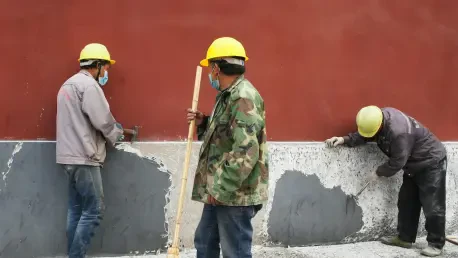In the dynamic world of construction, timely payments are crucial for keeping projects on track and ensuring stakeholders are paid for their contributions. Luca Calarailli, an expert in construction with an eye for the potential of technology in driving industry innovation, is here to shed light on Manitoba’s prompt payment regulations. These regulations promise to streamline payment processes and protect contractors from disruptions due to delayed payments.
What motivated the Government of Manitoba to enact the prompt payment regulation?
The government was driven by the need to tackle the common issue of delayed payments within the construction industry, which often results in financial strain for contractors, particularly those at the end of the payment chain. By establishing these regulations, the aim was to ensure that all parties receive timely compensation, thus avoiding project disruptions and maintaining a healthy industry flow.
Can you explain how the prompt payment regulation will affect the construction industry’s payment process?
The regulation streamlines the payment process by setting clear timelines for payments to contractors and subcontractors. This means that payments must be made at specific intervals, reducing the uncertainty and instability that comes with indefinite payment delays. The overall effect is a smoother and less contentious financial exchange, promoting efficiency in construction projects.
How does the new regulation protect contractors, particularly those at the end of the payment chain?
Contractors at the end of the payment chain often suffer the most from delayed payments. The regulation specifically targets this issue by ensuring that these local contractors can receive their payments promptly without funds being withheld further up the chain. This protection helps local contractors maintain their operations without facing undue financial risk.
What specific conflicts or issues within construction projects does the regulation aim to address?
It targets issues related to payment disagreements and the cascading effects these disputes can have on project timelines. By implementing a structured payment timeline and an adjudication framework, it seeks to minimize these conflicts, ensuring that each party can continue their contribution without facing the barriers of unpaid dues.
How does the adjudication framework work within this new regulation?
The framework provides a legal mechanism whereby disputes over payments are swiftly resolved by adjudicators, who are empowered to make binding decisions. This process is faster than going through the courts, and it allows projects to proceed without prolonged financial dispute, which is crucial in maintaining construction momentum.
What were some significant steps the government took to establish the adjudication authority?
Establishing the adjudication authority involved collaboration with various stakeholders in the construction industry, including professional associations, contractors, and government bodies, to ensure comprehensive oversight and adaptability of the system. Key steps involved defining the authority’s role, setting requirements for adjudicators, and detailing the adjudication process itself.
Could you elaborate on the duties and powers of the adjudication authority introduced in the regulation?
The authority is tasked with supervising the adjudication process, appointing qualified adjudicators, and ensuring that decisions are enforced. It has the power to resolve payment disputes, which includes investigating claims and making determinations that parties must adhere to.
How has the construction industry responded to the new prompt payment system in Manitoba?
The response has been overwhelmingly positive, with industry professionals acknowledging it as a significant advancement in payment handling. The prompt payment system is seen as offering much-needed security, particularly for small and medium enterprises, allowing them to plan and execute projects without the fear of financial bottlenecks.
What role did the Winnipeg Construction Association play in the development of this regulation?
The association played a pivotal role by partnering with the government to ensure the regulation was aligned with the practical realities and needs of the industry. They provided invaluable insights into how delayed payments impact contractors and advocated for a system that addresses these challenges directly.
In what ways does the regulation benefit small- and medium-sized companies in the construction sector?
For smaller companies, cash flow is crucial; these regulations ensure that they receive timely payments, improving their ability to invest in their business and workforce. This stability allows for better operational planning and a greater capacity to hire new talent, including apprentices, which is vital for the industry’s growth.
How might prompt payment regulations impact job creation within the construction industry, particularly regarding hiring apprentices?
With improved payment reliability, companies can confidently expand their teams, including hiring apprentices who contribute to the industry’s future. Stable finances enable companies to invest in training and development, which is essential for nurturing skills and innovation in construction.
What challenges do you foresee in the initial adaptation phase of the prompt payment system?
Initially, companies may struggle with adjusting to the new timelines and processes. There might be a learning curve in understanding the adjudication framework. However, with proper guidance and support, the transition can be managed effectively, fostering a more robust payment ecosystem.
Are there any ongoing support or resources provided to the construction industry to help adapt to the new regulation?
Yes, there are efforts to provide educational resources and training sessions to familiarize industry players with the new adjudication processes and payment timelines. It’s vital for everyone involved to understand the mechanisms in place, reducing the likelihood of confusion or non-compliance.
How does this regulation align with Manitoba’s broader economic goals, particularly concerning the construction industry?
The prompt payment regulation complements Manitoba’s economic objectives by fostering a resilient construction industry. By securing financial flows, it promotes continuous investment and project development, which are key to sustainable economic growth within the province.
Will there be any monitoring or evaluation process to assess the effectiveness of this regulation over time?
Certainly, there will be mechanisms to monitor the regulation’s impact, including regular assessments and feedback collection from stakeholders. It will support continuous improvement of the regulation by identifying areas for adjustment or enhancement based on industry experiences.
Do you have any advice for our readers?
My advice would be to stay informed and adaptable. As regulations evolve, understanding the systems in place and how they impact your business is crucial. Embrace the changes as part of a broader strategy for growth and stability within the construction industry.









